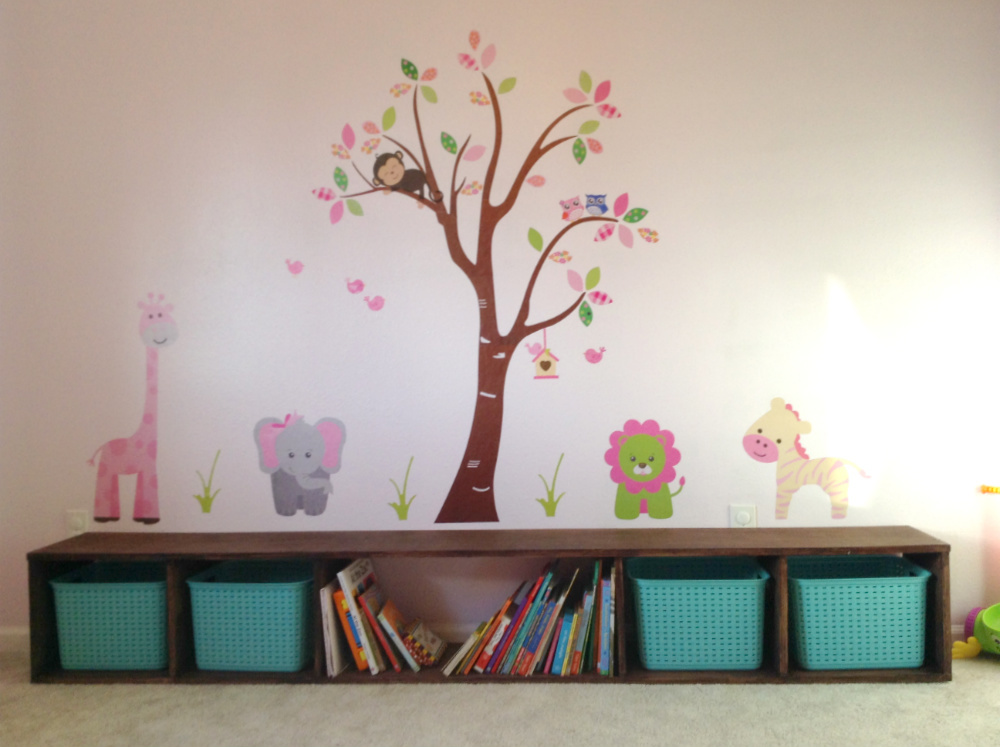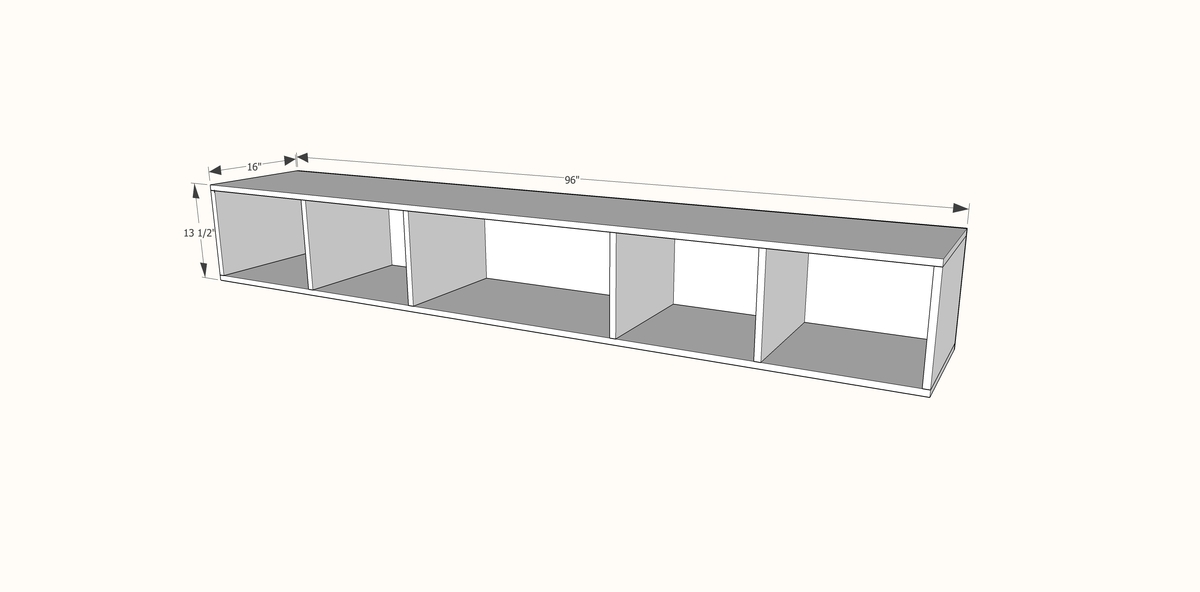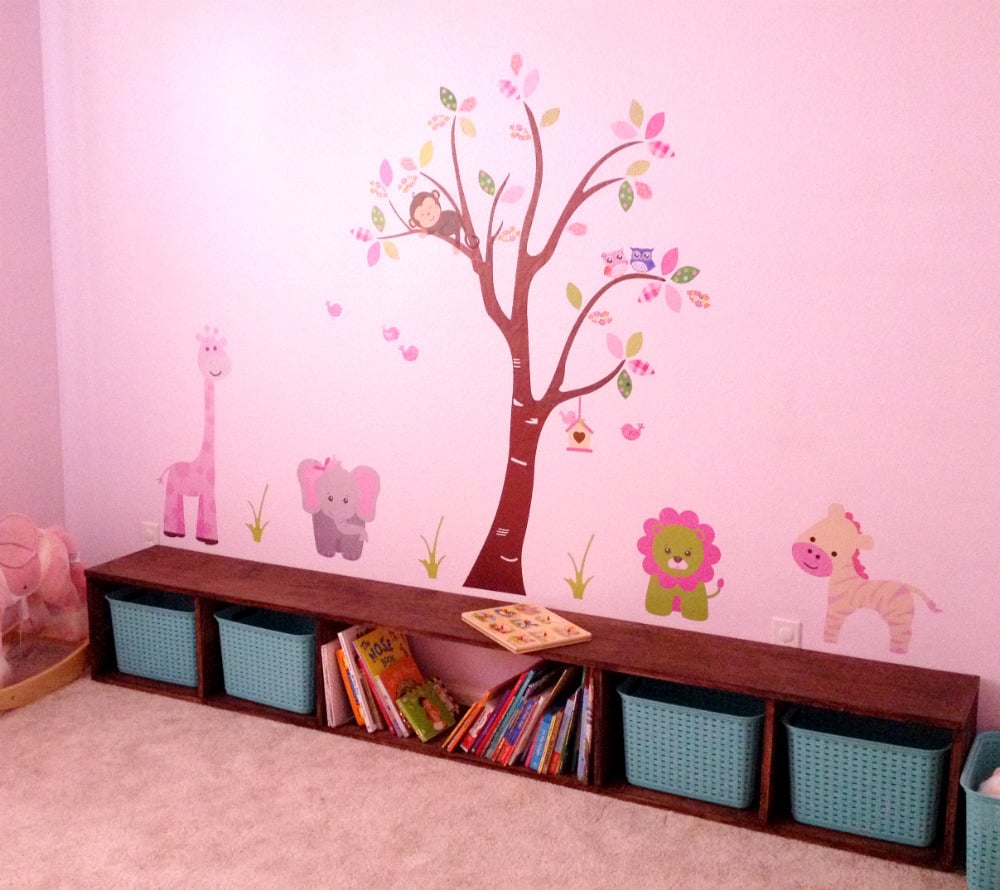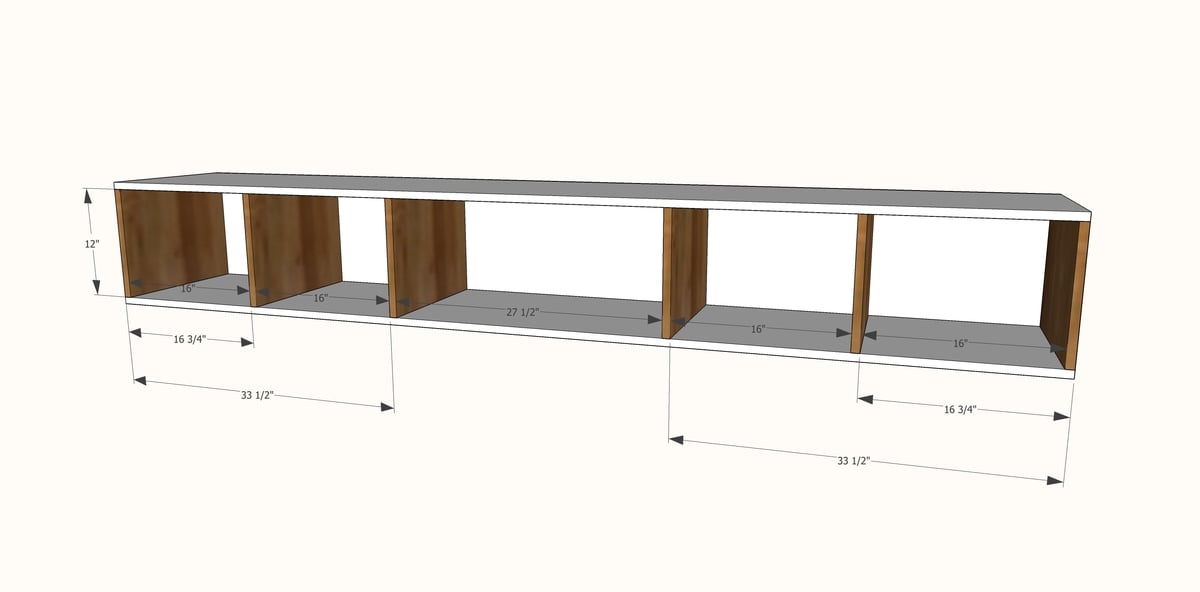
DIY storage bench from one sheet of plywood!

Preparation
1 - sheet of 3/4" thick plywood, ripped into strips 15-3/4" wide x 8 feet long
(36) Fine Thread 1-1/4" pocket hole screws
Stain or paint
Wood glue
OPTIONAL BACK
1 sheet of 1/4" thick plywood or other sheet goods
3/4" long nails to fit your finish nailer or staples
2 - 3/4" plywood 15-3/4" wide x 8 feet long
6 - 3/4" plywood 15-3/4" wide x 12" long
Please read through the entire plan and all comments before beginning this project. It is also advisable to review the Getting Started Section. Take all necessary precautions to build safely and smartly. Work on a clean level surface, free of imperfections or debris. Always use straight boards. Check for square after each step. Always predrill holes before attaching with screws. Use glue with finish nails for a stronger hold. Wipe excess glue off bare wood for stained projects, as dried glue will not take stain. Be safe, have fun, and ask for help if you need it. Good luck!
Instructions
Step 1
Cut the plywood into strips 8 feet long x 15-3/4" wide. Discard the remaining scrap piece.
From one of the strips, cut 6 dividers, 12" long.
NOTE: If you wish to conceal front plywood edges, apply with an iron edge banding to the front of each of the plywood pieces.
NOTE: For true bench height, cut the dividers instead at 15-3/4"long.
Step 2
It is always recommended to apply a test coat on a hidden area or scrap piece to ensure color evenness and adhesion. Use primer or wood conditioner as needed.
If you wish to hide front plywood edges you could iron on edge banding to the exposed front plywood edges. I would recommend doing this before assembly.














